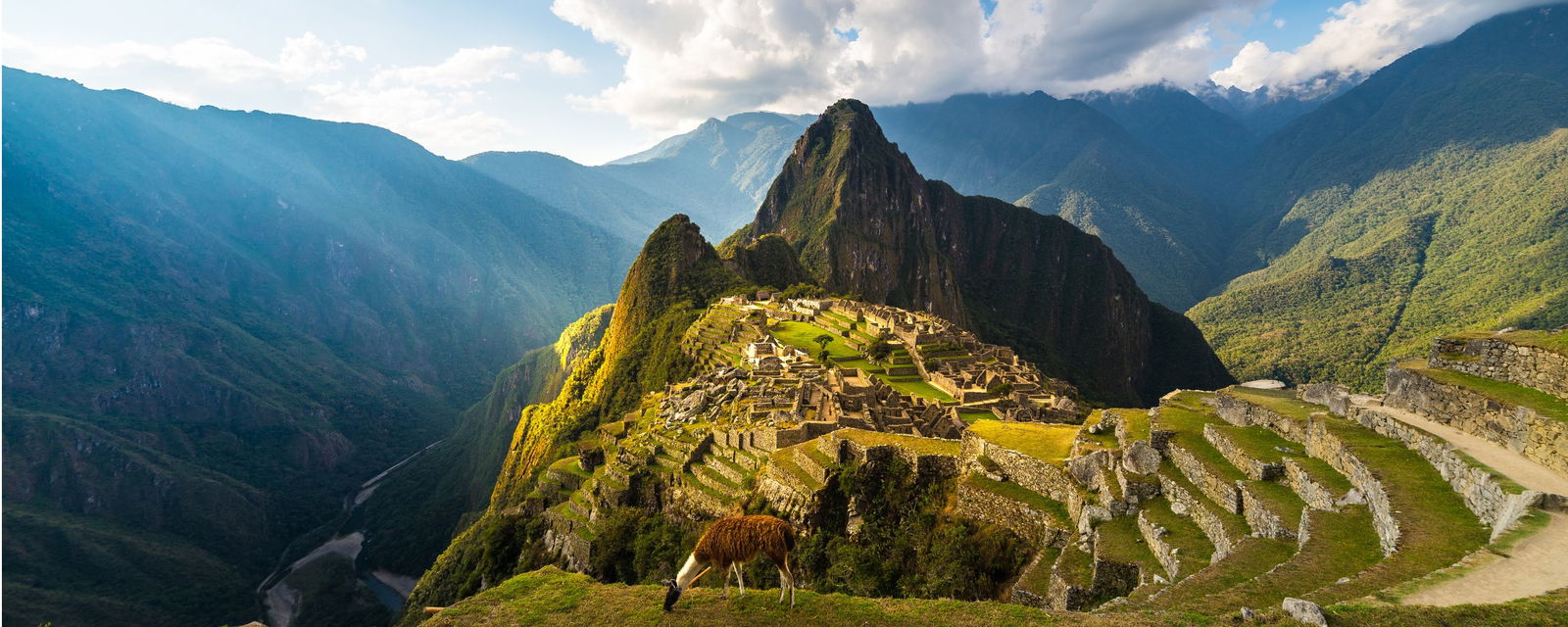


A hidden city between two peaks in the Andes—one of the Inca Empire’s greatest. Machu Picchu would disappear after only about 100 years, but it was never found by the colonizing Spanish invaders and thus remained untouched. Perhaps it’s the views from the lost Incan city that astound travelers the most. Framed by the peak of Huayna Picchu, it looks out over vast mountain-scapes and the raging river below. Machu Picchu is without question one of the most lauded landmarks in the world.
With over 100 skeletons found here, this is thought to be where burials and/or sacrifices were performed. The impressive construction of the tomb is certainly something to see.
Beginning usually in Cusco, travelers can opt to take the train or follow the Inca trail into the hidden city. The trail system will take you through the mountains, cloud forest and through the alpine tundra.
This is a small town that sprung up as a result of the popularity of Machu Picchu. You can take the train from here and it serves as a great home base as some of the closest hotels to the site are located in Aguas Calientes.

Machu Picchu's winter season is from June to August. During this time, the weather is generally dry, with cooler daytime temperatures. It's a popular time for tourists to visit the ancient ruins, as the clear skies offer stunning views of the majestic mountains and the intricate Inca stone structures. However, it's essential to be prepared for colder temperatures, especially during early mornings and evenings.

Spring in Machu Picchu, from September to November, brings milder temperatures and occasional showers. The landscape becomes greener, and the surrounding hills are adorned with blooming flowers. Spring is an excellent time for trekking the Inca Trail to Machu Picchu, as the weather is generally more stable, offering an enchanting journey through the Andean landscapes.

Machu Picchu's wet season takes place from December to March. During this period, the region experiences frequent rain showers and higher humidity. Despite the rain, visiting Machu Picchu during the wet season offers a unique perspective, as the rainforest surroundings come to life with vibrant flora and fauna. However, it's essential to be prepared for muddy trails and limited visibility due to fog.

Fall in Machu Picchu, from March to May, brings cooler temperatures and occasional showers. It's a quieter time to visit the ancient site, with fewer crowds. Fall is an excellent time for photographers and nature enthusiasts, as the landscape is at its greenest and most picturesque.
